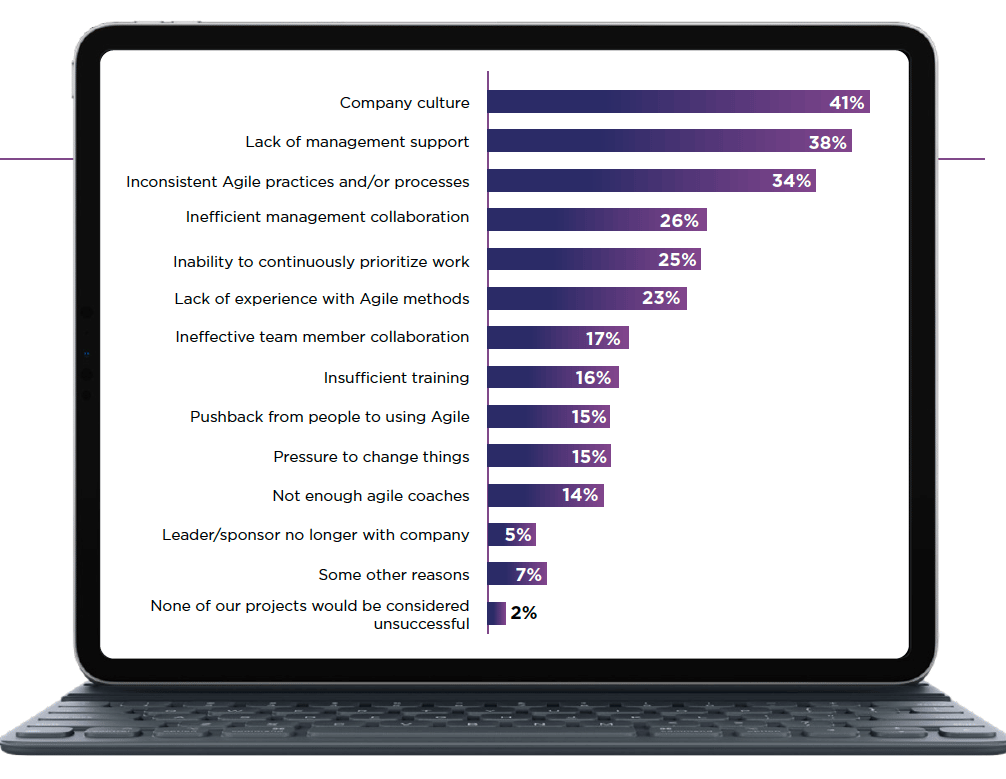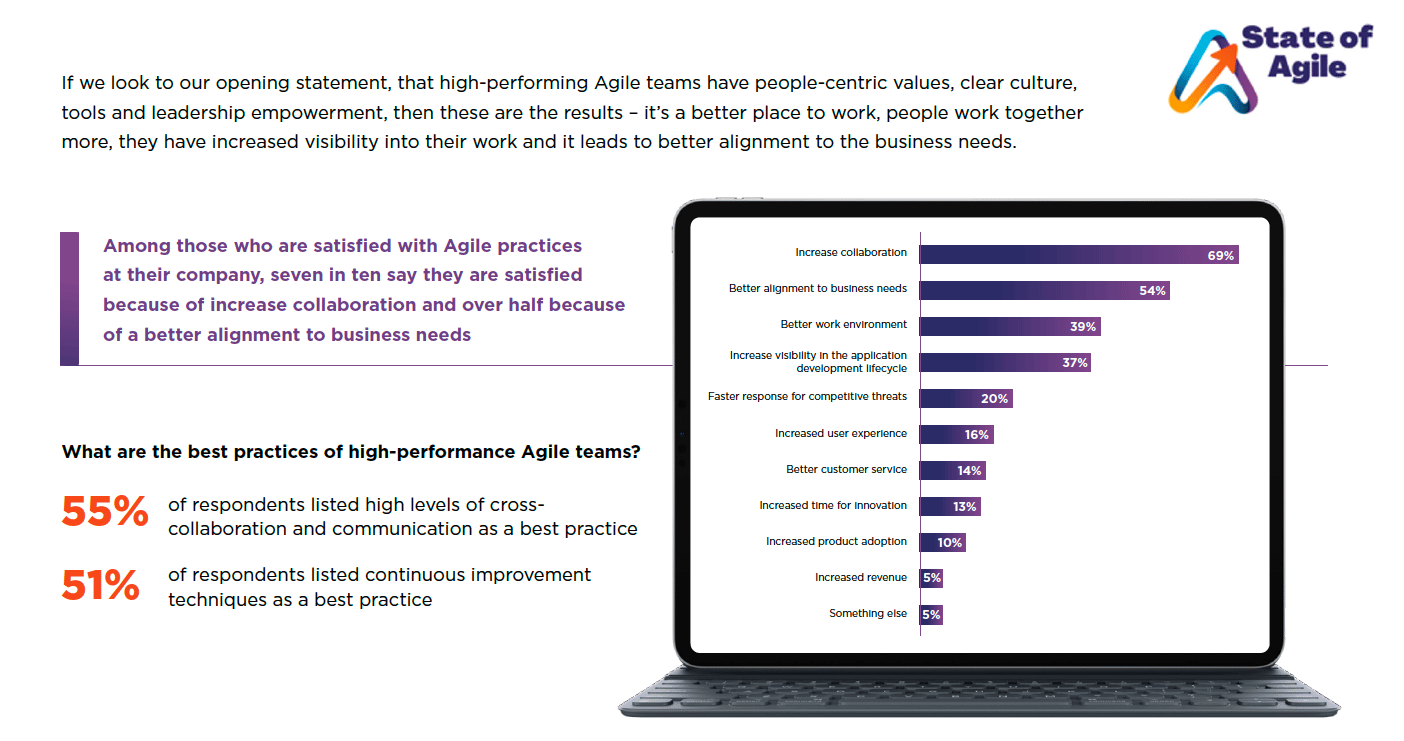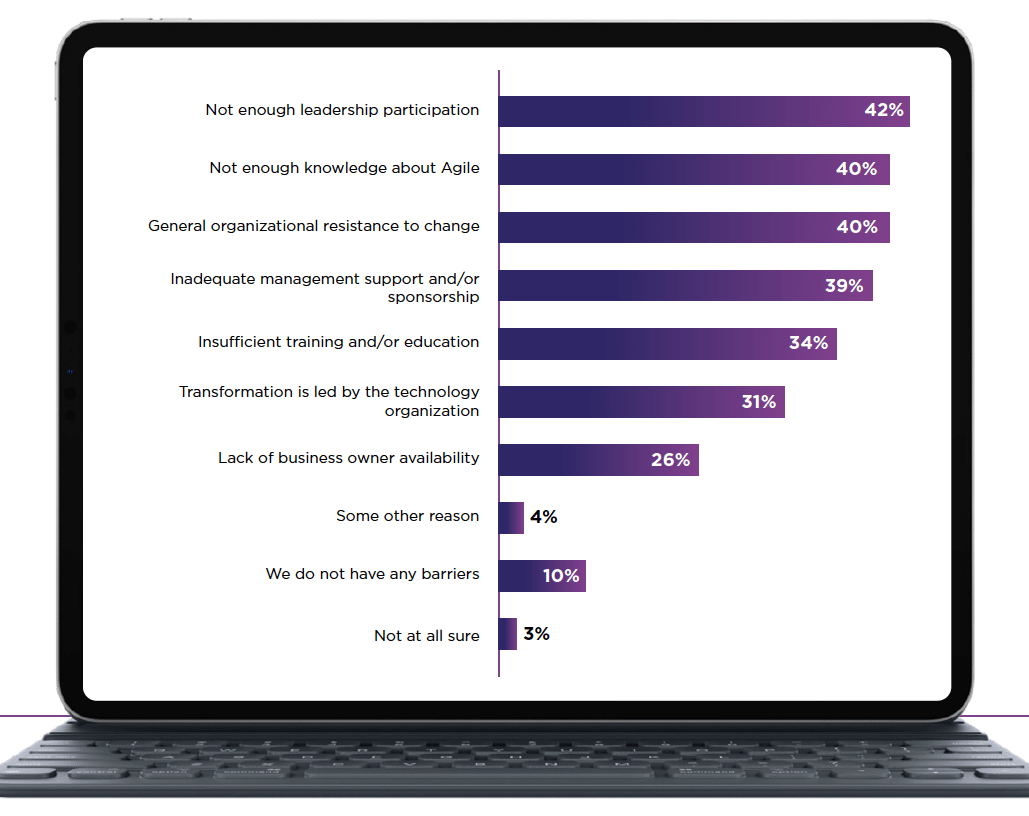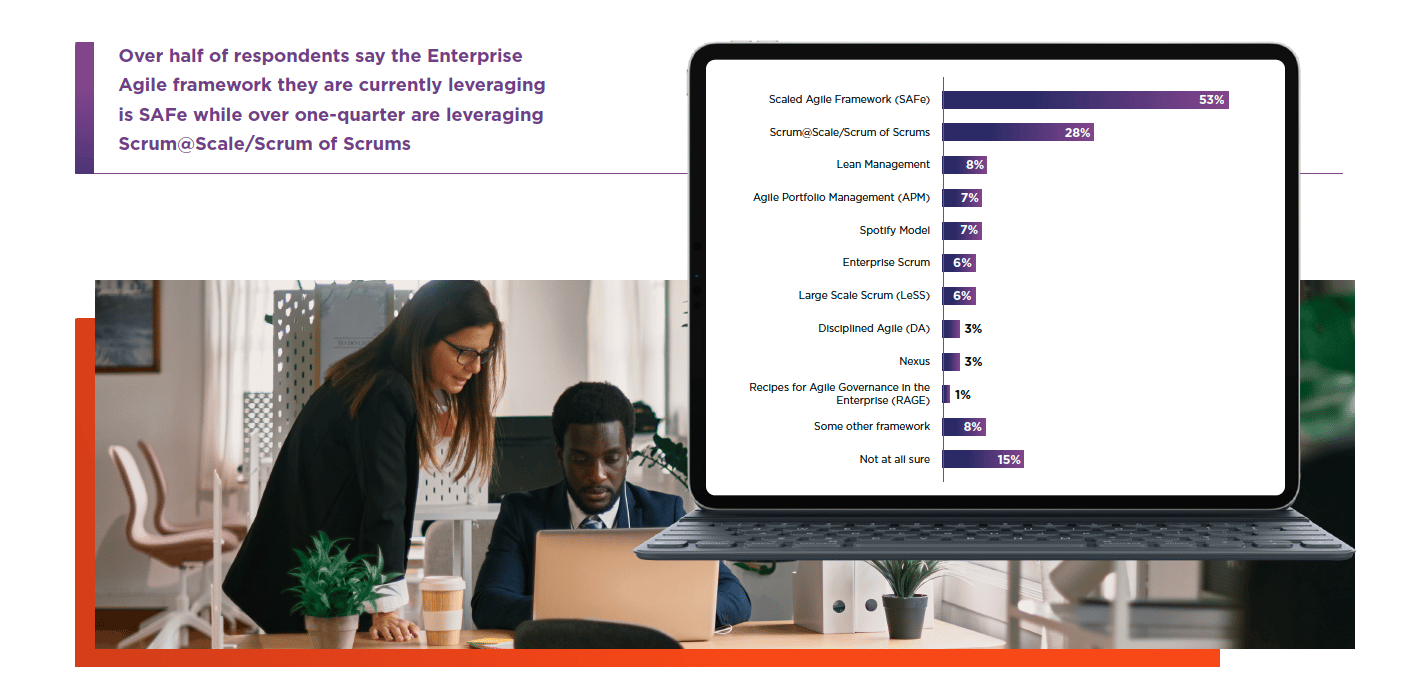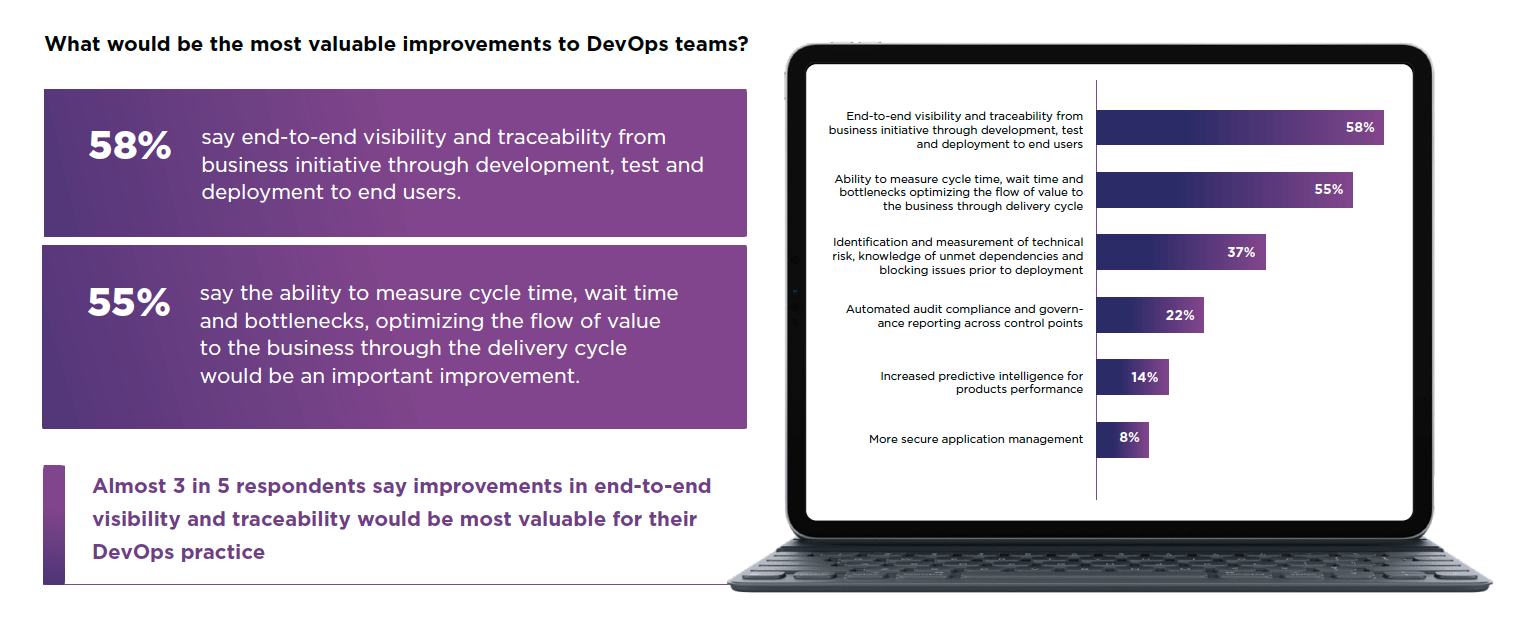Over the last few years, Agile practices have extended beyond software development and the IT team into other business units such as marketing and HR. New research from digital transformation tech firm Digital.ai finds a significant opportunity to refine and mature the growing enterprise-wide Agile adoption.
The firm’s 16th annual State of Agile report spotlights challenges ahead: management can be a key barrier, and this indicates that having corporate champions for Agile and senior leadership that understand and buy-in to the process are leading indicators of success.
Among the 40 percent of software development pros surveyed who are dissatisfied with Agile at their organization, a clash with “company culture” is listed as the leading cause (41 percent) of unsuccessful delivery. Four in five respondents are currently using Agile but half are using a combination of Agile, waterfall and/or iterative and 27 percent say this combination of frameworks is a struggle for them.
The leading causes of unsuccessful delivery with Agile:
“The data show that Agile has crossed the chasm beyond software and IT to the entire enterprise, allowing benefits to accrue not just to the software development teams, but to the organization as a whole,” said Derek Holt, general manager, Agile and DevOps at Digital.ai, in a news release. “In these dynamic and uncertain economic times adoption of Agile, like DevOps, has continued to accelerate with a focus on orchestration, automation and analytical insights to help organizations maximize the impact of their software investments and win in the marketplace.”
Quantifying Agile: How teams are being measured and how they prioritize their work
IT and software development teams using Agile practices report they are measured against two key success metrics that are closely tied to achieving a company’s digital transformation goals:
- On-time delivery (47 percent)
- Business objectives achieved (44 percent)
- Surprisingly, 19 percent are still not sure what is being used to measure business value.
When asked how Agile practices are implemented at their organizations, three top priorities emerged: accelerate time to market (52 percent), delivery predictability (44 percent) and lower risk (31 percent).
However, when drilling into work prioritization on application development and delivery, the data show that meeting company and end customer goals top delivery time, indicating a growing awareness of the need to align to company objectives and be able to demonstrate this to stakeholders. The top three priorities were:
- Company goals (54 percent)
- End customer satisfaction (43 percent)
- Time to deliver (35 percent)
Best performing Agile teams collaborate better and are more aligned
Survey respondents satisfied with Agile practices in their organization note it is easier to do their job with others: 69 percent cite increased collaboration with others as a benefit while 54% experienced better alignment to business needs. Thirty-nine percent also note a better work environment and increased visibility in the application development lifecycle.
DevOps teams need better visibility, traceability and collaboration
The report indicates there is room for better collaboration and integration when it comes to DevOps teams, especially as business objectives become more important to Agile teams. Fifty-one percent agreed that DevOps teams are not incorporating business feedback regularly, meanwhile, three in five (58 percent) say the most valuable improvements to DevOps teams would be end-to-end visibility and traceability from business initiative through development, test and deployment to end users. Fifty-five percent say the ability to measure cycle time, wait time and bottlenecks – optimizing the flow of value to the business through the delivery cycle—would be an important improvement.
What’s challenging from a people perspective?
Scrum and Scaled framework most popular among Agile practitioners
When it comes to Agile tools used, Scrum continues to lead, increasing from 58 percent in 2020 to 87 percent in the current survey. Kanban use exploded from 7 percent in 2020 to 56%, while Scrumban has grown modestly from 10 percent in 2020 to 27%. The most popular framework continues to be the Scaled Agile Framework (SAFe) which grew in use from 37 percent in 2021 to 53 percent this year. Scrum@Scale/Scrum of Scrums also saw a rise after years of decline, from 9 percent in 2021 to 28 percent while Lean Management likewise grew after falling for several years from 2 percent in 2021 to 8 percent this year.
“This year’s State of Agile report quantifies what many business leaders have been feeling for some time—agility is now a requirement for future success,” said JJ Sutherland, CEO of Scrum Inc., in the release. “Those organizations that wait for a ‘perfect’ time to begin will be left watching their agile competitors pass them by. The message is clear: Don’t wait. Do.”
The 16th annual State of Agility survey was conducted by Digital.ai from July – August 2022. Respondents included 3,220 Agile experts and practitioners from all over the globe working at organizations ranging in size from 20,000 to 100 employees. The complete survey responses were collected, analyzed and prepared into a report by Regina Corso Consulting, an independent survey consultancy.


